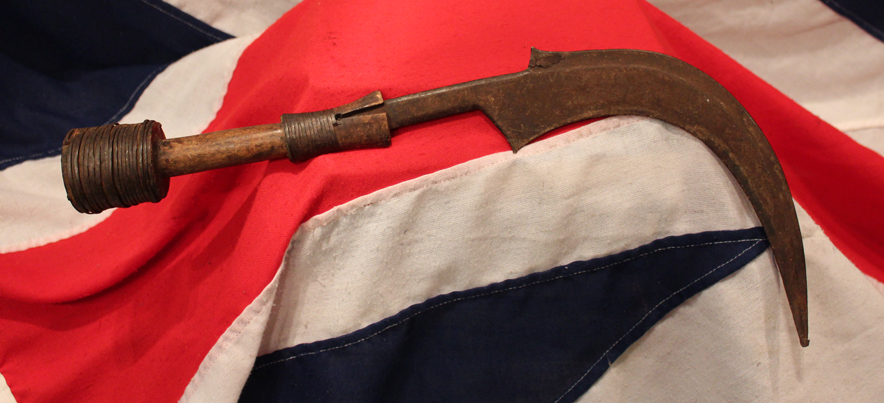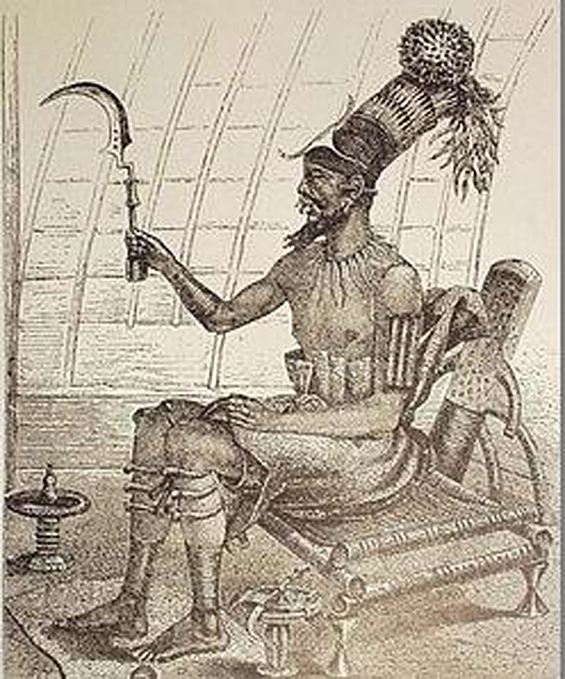A Rare 19th Century King's Knife of the Zande or the Mengbetu People, A Trombash Power Authority Knife
A long Knife consisting of a short cylindrical wooden handle, round in section, with a flat end bound in iron banding at the pommel end. The other end of this is cut flat, and has a smaller cylindrical body as the middle hand grip section. Above this point, the handle connects with the blade tang. Which goes through the handle, the tang has been inserted through the centre of the handle, and then its rectangular end hammered over at the top to fix it in place. This is end is visible where it emerges through the handle top, and is off centre. The narrower part of the handle have been decorated with an iron binding strip. Both binding strips [top and bottom] have their ends hammered into slots in the wood to secure them. The blade is curved, with a broad flat ridge running along the length on both sides. This is not centred. On one side of the ridge, the blade extends to form a broad, sharpened base edge with a pointed corner; a more narrow blade extends from the other side of this, slightly higher up the knife. The sides then begin to taper in towards the point at the other end. Both edges were once sharpened. The object is complete, with some minor cut marks on the blade and handle.
Very similar to a Mengbetu collected by Robert Grenville Gayer-Anderson in the Bahr el Ghazal region, probably between 1909 and 1914, in the period immediately before World War I. At the time this object was collected, the Bahr el Ghazal province was much larger than it is today, extending from roughly the Bahr el Arab all the way to the border with the Belgian Congo; this area is now divided into the districts of Western Bahr el Ghazal, Northern Bahr el Ghazal, and parts of Warab, El Buheyrat and Western Equatoria. The drawing in the gallery is a 19th century depiction of Munza, the king of the Mangbetu. Seated on his throne, he holds a similar knife to ours as a symbol of power and authority.
Code: 19166
395.00 GBP





